Smartwatches – whether they are meant to be a companion to a smartphone or act as a standalone device – are not the only option in the wearable market. In fact, if recent news is to be believed they aren’t the most popular type of device either.
A report from ABI Research reveals that fitness trackers are outselling smartwatches by a ratio of 4:1. In just the first quarter of 2014, more than 2.3 million fitness tracking devices were sold compared to only a half a million smartwatches.
This is likely due to the fact that fitness tracking devices offer a truly unique feature which smartphones do not. After all, most people just use their smartphones to check the time now anyway. Wrist watches have long been obsolete if only for checking the time. Today, they are worn mostly as a fashion accessory – though admittedly they still include timepiece functionality.
 Many smartwatches now include fitness tracking support of some kind. No doubt, the upcoming Android Wear devices will also include fitness features. They are still, however considered separate from dedicated fitness trackers.
Many smartwatches now include fitness tracking support of some kind. No doubt, the upcoming Android Wear devices will also include fitness features. They are still, however considered separate from dedicated fitness trackers.
In light of recent news that fitness trackers are exceedingly popular, we thought it would be a good idea to list the best on the market. Those of you who are looking to purchase one would do well to choose one of the options from the list below. Of course, this is not a comprehensive list by any means so just be aware that there are plenty of other options out there.
The Top Five Fitness Trackers Currently Available
The market will soon be saturated with a plethora of smartwatches and fitness trackers. We imagine it will be even more difficult to make a purchase for those picking up their first wearable smart device, more difficult than it already is anyway. To help out, we’ve compiled a list of the top five fitness trackers that are currently available.
As we said above, these are not the only devices on the market – you might find another that suits your needs better. However, the models listed certainly offer the most bang for your buck. Let’s dive right in.
Fitbit Force (or Flex where unavailable)
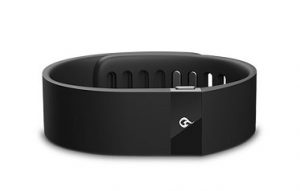 Arguably one of the most popular fitness trackers on the market, at least by name, the Fitbit Force is the latest iteration taking after the previous model – the Fitbit Flex. It’s essentially a plain and remarkably simple wristband that includes useful fitness tracking support. The big difference between the Force and the Flex is that the former model includes a small display and an altimeter to track elevation changes. In addition, the Force has been updated a bit so that it functions more like a smartwatch complete with notification support – thanks to a paired smartphone.
Arguably one of the most popular fitness trackers on the market, at least by name, the Fitbit Force is the latest iteration taking after the previous model – the Fitbit Flex. It’s essentially a plain and remarkably simple wristband that includes useful fitness tracking support. The big difference between the Force and the Flex is that the former model includes a small display and an altimeter to track elevation changes. In addition, the Force has been updated a bit so that it functions more like a smartwatch complete with notification support – thanks to a paired smartphone.
The most notable features include a waterproof design, Bluetooth 4.0 support and a 4-5 day battery rating with a dedicated USB charging cradle to juice up the device.
Before we list the price, it’s important that we note the Fitbit Force has been recalled by the company. It appears that some users have experience skin irritation while wearing the device. It may be difficult to find the Force, so you may have to go with the older model the Flex instead.
The Fitbit Flex is available for $99.95, while the Fitbit Force is available for $129.95.
Nike Fuelband SE
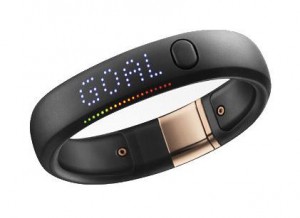 The Nike Fuelband SE is probably one of the best fitness tracking devices on the market for sports enthusiasts. It still includes the same basic design as the original Nike Fuelband, albeit with new interior color choices like yellow, pink or red.
The Nike Fuelband SE is probably one of the best fitness tracking devices on the market for sports enthusiasts. It still includes the same basic design as the original Nike Fuelband, albeit with new interior color choices like yellow, pink or red.
The Fuelband SE is not waterproof so you cannot submerge completely in water, however it can be worn in the shower safely. It also includes a USB 2.0 port so that you can plug the device into a compatible USB charger, or a computer to transfer data.
It’s great for gamers too as Nike has made an attempt to “gamify” fitness tracking functionality similar to how the Fitocracy service works. The device tracks proprietary Fuel points which are used to reward owners with various achievements.
The Nike Fuelband SE will set you back about $99.
Jawbone UP24
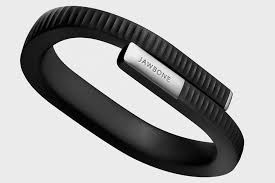 The Jawbone UP24 is nearly identical to the previous model in both form and function, with one exception – the UP24 now includes Bluetooth 4.0 support so that you can sync data directly with iPhone and Android smartphones.
The Jawbone UP24 is nearly identical to the previous model in both form and function, with one exception – the UP24 now includes Bluetooth 4.0 support so that you can sync data directly with iPhone and Android smartphones.
Many consider the Jawbone UP models to be the most elegantly designed fitness trackers. They are definitely the slimmest you can find, at least right now. It does not include a display of any kind instead it synchronizes all data with a connected companion through a mobile app.
The Jawbone UP24 is available in multiple colors includes orange, black pink and yellow. The updated software for the latest iteration includes what Jawbone calls the “Insights engine.” It is able to make personal recommendations about several different things based on your tracked data. The UP24 can track step count, sleep cycles activity info and even food tracking. It works with many third party apps like Strava, RunKeeper and Map My Run.
Battery life of the device is rated at seven days with a full charge, which isn’t bad at all. Unfortunately, that’s three days less than the original model.
You can purchase the Jawbone UP24 for $149.99.
Misfit Shine
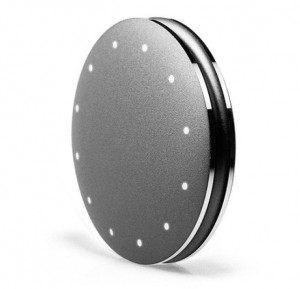 The Shine is a unique device that is neither watch-like not wearable in nature. You can wear it several different ways – whichever you prefer – whether that’s on the wrist, as a necklace or clipped to your person. The all-metal design is waterproof up to 5 ATM (150 feet), and the company even claims it’s laundry proof if you forget it’s in your pocket. Twelve LED lights around the rim of the exterior will tell you how you’re doing. In addition, it is powered by a standard CR2032 battery that lasts up to four months.
The Shine is a unique device that is neither watch-like not wearable in nature. You can wear it several different ways – whichever you prefer – whether that’s on the wrist, as a necklace or clipped to your person. The all-metal design is waterproof up to 5 ATM (150 feet), and the company even claims it’s laundry proof if you forget it’s in your pocket. Twelve LED lights around the rim of the exterior will tell you how you’re doing. In addition, it is powered by a standard CR2032 battery that lasts up to four months.
It can track activities like walking, running, cycling, swimming and even sleeping. A unique system labeled Activity Tagging also allows you to track custom activity data too, if necessary.
Bluetooth 4.0 support allows it to synchronize with iOS and Android devices in real-time. You can purchase several different cradles, wristbands or options via the main website that allow you to wear and use the device how you prefer. It’s clear the usability of the device is its biggest selling point.
You can purchase the Misfit Shine for $99.99 and it’s available in a wide range of colors – which we’re not going to bother listing in full here (there are tons).
Withings Pulse
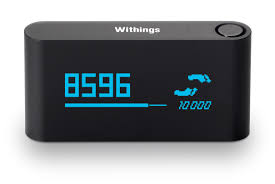 Unlike the rest of the devices on this list, the Withings Pulse is not meant to be worn on your wrist. Instead, it is designed to clip to your pocket, trousers or belt loop similar to a pedometer. It can track a whole slew of things like steps walked, elevation, calories burned, and even hours slept.
Unlike the rest of the devices on this list, the Withings Pulse is not meant to be worn on your wrist. Instead, it is designed to clip to your pocket, trousers or belt loop similar to a pedometer. It can track a whole slew of things like steps walked, elevation, calories burned, and even hours slept.
An automatic run detection mode will begin tracking data as soon as you start moving quicker. There’s also a heart rate sensor on the rear of the device, which requires that you only place it against your finger to collect a reading.
Bluetooth 4.0 allows the device to connect to Android and iOS smartphone and transmit data in realtime. Battery life is rated at a total of two weeks, with a special power save mode granting an extra 24 hours if necessary.
All information is displayed via a small LCD screen directly on the device, but it can also be sent to the connected phone.
You can purchase the Withings Pulse for $119.95.
Where Do You Stand: Dedicated Fitness Tracker or Smartwatch?
There you have it! Those are the top five fitness trackers currently available. Feel free to share your experience if you own any of the devices listed above or would like to mention another device you prefer.
Where do you stand in the wearable market? Would you rather have a dedicated fitness tracker, or a smartwatch that includes additional activity tracking support on the side?
